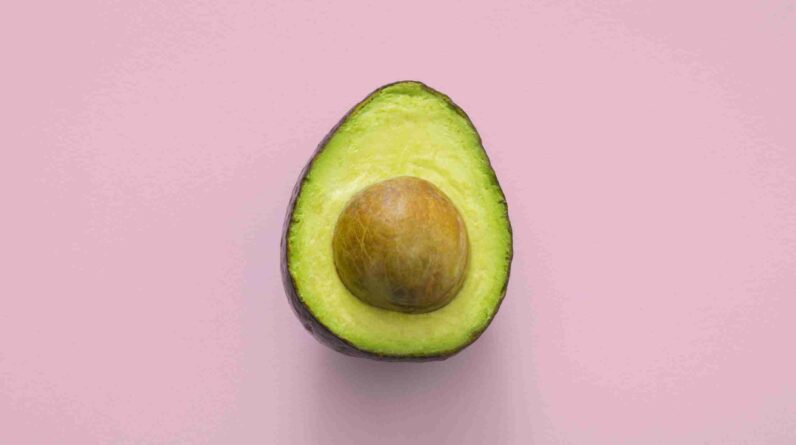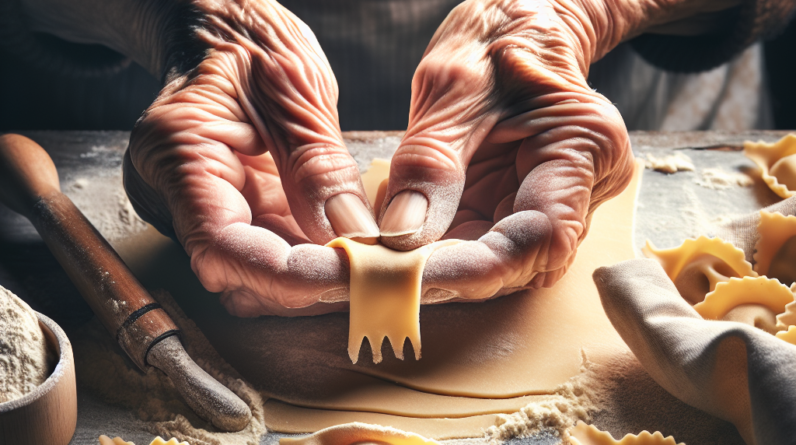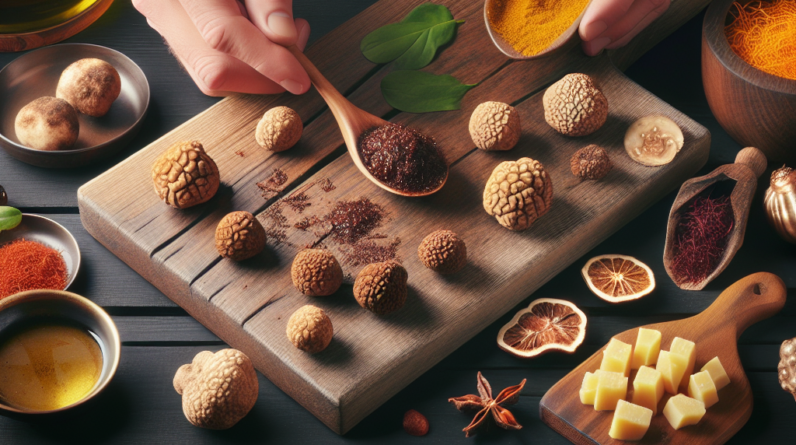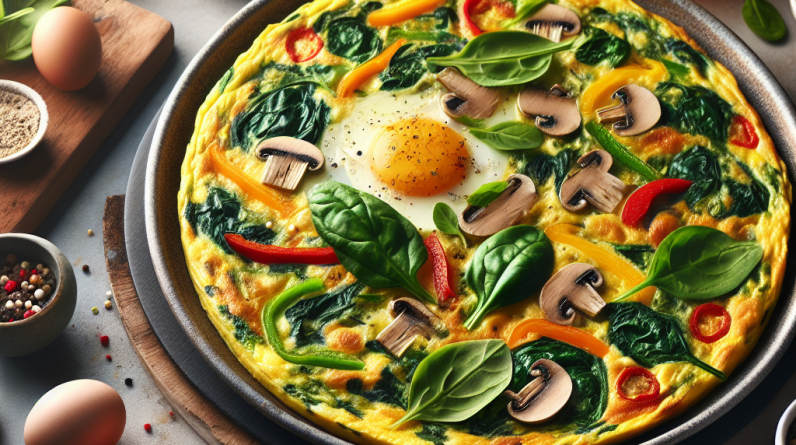Step into the kitchen with us as we explore the art of creating the perfect Italian polenta and discover the myriad of ways it can be served. Delve into the secrets of achieving that creamy, velvety texture and learn about the different flavor combinations that elevate this humble cornmeal dish to new heights of culinary delight. From classic accompaniments to innovative twists, we’ll take you on a mouthwatering journey through the versatile world of Italian polenta. Bon appétit!

Choosing the Right Type of Polenta
Polenta is a versatile dish that can be enjoyed in various ways. To ensure the best outcome, it’s crucial to choose the right type of polenta for your recipe. There are several different types available, each with its own characteristics and cooking requirements.
Understanding the Different Types of Polenta
Polenta can be categorized into three main types: instant, medium-grain, and coarse-grain. Instant polenta is the quickest and easiest to prepare, as it has been partially cooked and then dehydrated. Medium-grain polenta has a finer texture and takes slightly longer to cook, while coarse-grain polenta has a more rustic and grainy texture, requiring a longer cooking time.
Selecting the Best Type for Your Recipe
When selecting the best type of polenta for your recipe, consider the desired texture and cooking time. If you’re looking for a smoother, creamier polenta, instant or medium-grain polenta would be the ideal choice. On the other hand, if you prefer a heartier and more textured polenta, coarse-grain polenta is the way to go. Additionally, take into account the cooking time you have available, as different types of polenta require varying lengths of time to cook properly.
Preparing the Polenta
Preparing polenta involves a few necessary steps to ensure its deliciousness and optimal texture. By carefully measuring the ingredients, following proper cooking techniques, and incorporating flavorful ingredients, you can create a memorable polenta dish.
Measuring the Ingredients
To achieve the perfect balance of flavors and textures, it’s important to measure the ingredients accurately. Start by determining the desired serving size and adjust the amount of polenta and liquid accordingly. Typically, the ratio for polenta is 1 part grain to 4 parts liquid, but this can vary based on personal preferences.
Cooking the Polenta
Cooking polenta requires patience and attention to detail. Begin by bringing the liquid (water, broth, or a combination) to a boil in a large pot. Slowly pour in the polenta while whisking continuously to prevent lumps from forming. Reduce the heat to low and simmer the polenta, stirring frequently, until it reaches the desired consistency. This process can take anywhere from 15 to 45 minutes, depending on the type of polenta being used.
Adding Flavorful Ingredients
To elevate the taste of your polenta, consider incorporating flavorful ingredients during the cooking process. You can add butter, grated cheese, herbs, spices, or even sautéed vegetables to infuse the polenta with enticing aromas. Experiment with different combinations to find your favorite flavor profiles and create a truly unique polenta experience.
Achieving the Perfect Texture
The texture of polenta plays an important role in its overall enjoyment. By understanding the consistency of polenta, implementing appropriate cooking techniques, and following tips to avoid lumps, you can achieve a smooth and velvety texture.
Understanding the Consistency of Polenta
Polenta can range in consistency from a thick porridge-like texture to a firmer, sliceable consistency when allowed to cool. The desired consistency depends on personal preference and the ultimate purpose of the polenta dish. Thicker polenta is well-suited for serving as a side dish, while a softer and creamier polenta can be used for spreading or layering in other recipes.
Cooking Time and Techniques
Cooking time and techniques are crucial factors in achieving the perfect polenta texture. It’s important to cook the polenta slowly over low heat, stirring frequently to ensure even cooking and avoid any lumps. The longer the polenta cooks, the softer and more tender the grains become. However, be mindful not to overcook the polenta, as it can become overly mushy and lose its desired texture.
Tips for Avoiding Lumps
Lumps in polenta can be a common challenge, but with a few simple tips, you can easily avoid them. Firstly, whisk the polenta into the liquid slowly and continuously to prevent clumps from forming. It’s also helpful to use a whisk with thin wires to break up any lumps that do occur. If you encounter lumps, you can also use a hand blender or immersion blender to smooth out the texture. Another trick is to sift the polenta before cooking it to remove any clumps or impurities.
Serving Suggestions
Once your polenta is cooked to perfection, it’s time to think about serving suggestions. Polenta is a blank canvas that can be enjoyed in numerous ways, both traditional Italian and creatively adapted to suit different cuisines.
Traditional Italian Ways to Serve Polenta
In traditional Italian cuisine, polenta is often served as a side dish alongside hearty stews, braised meats, or sautéed vegetables. It can be shaped into a mound on a plate, creating a bed for the main dish, or served in individual portions as a base for toppings or sauces. Polenta is also commonly used as a substitute for pasta or bread, accompanying classic dishes like osso buco or gorgonzola cheese.
Pairing Polenta with Complementary Dishes
While traditional pairings are undoubtedly delicious, don’t shy away from exploring complementary dishes that can enhance the flavors of polenta. For example, grilled vegetables, roasted mushrooms, or even seafood can be a delightful accompaniment to polenta. Additionally, consider incorporating fresh herbs, citrus zest, or a drizzle of olive oil to enhance the overall taste and add depth to your dish.
Creative Variations and Fusion Recipes
Polenta’s versatility lends itself to endless possibilities for creative variations and fusion recipes. You can incorporate international flavors by adding ingredients like curry powder, miso paste, or harissa. Alternatively, try experimenting with different types of cheese, such as goat cheese or blue cheese, for a unique twist. Don’t be afraid to think outside the box and unleash your culinary creativity when it comes to serving polenta.

Toppings and Accompaniments
To take your polenta dish to the next level, consider adding toppings and accompaniments that will enhance the flavors and textures even further. From classic toppings to saucy accompaniments, the choices are endless.
Classic Polenta Toppings
Classic polenta toppings include sautéed mushrooms, caramelized onions, or a generous sprinkle of grated Parmesan cheese. These toppings add depth and richness to the polenta, creating a harmonious and comforting dish. For a touch of freshness, consider topping your polenta with chopped fresh herbs like parsley or basil.
Delicious Saucy Accompaniments
The creamy texture of polenta pairs exceptionally well with saucy accompaniments. Consider serving polenta with a rich tomato sauce, a savory mushroom sauce, or a luscious meat-based ragù. These sauces not only infuse the polenta with flavor but also provide a delightful contrast in texture.
Cheese and Herb Enhancements
To elevate the taste of your polenta, don’t hesitate to incorporate cheese and herbs. From grated pecorino romano to crumbled feta, the choice of cheese can drastically enhance the savory notes of the dish. Fresh or dried herbs like rosemary, thyme, or sage can add a delicate aroma and depth of flavor.
Baking or Grilling Polenta
While polenta is traditionally cooked on the stovetop, there are alternative methods that can add a unique twist to your dish. Baking or grilling polenta can create a crispy exterior while maintaining a soft and creamy interior.
Using Polenta in Baked Dishes
To use polenta in baked dishes, you can spread it in a baking dish and allow it to cool until it solidifies. This creates a polenta cake that can be cut into slices and used as a base for various toppings. It can be baked with cheese, vegetables, or even a meat sauce for a delightful, hearty casserole.
Grilling Techniques for Polenta
Grilling polenta is another fantastic option for adding depth and flavor to your dish. Once the polenta has cooled and solidified, you can cut it into grill-friendly shapes, such as slices or wedges. Brush the polenta with olive oil and grill it until it becomes crispy on the outside, creating a delightful contrast in texture when paired with the creamy interior.

Leftover Polenta Ideas
If you find yourself with leftover polenta, don’t let it go to waste! There are countless ways to transform leftover polenta into new and exciting dishes that will impress your taste buds.
Transforming Leftover Polenta into New Dishes
One popular way to repurpose leftover polenta is by cutting it into shapes, such as triangles or squares, and frying them until crispy. These polenta fries can be served as a tasty snack or as a side dish. Leftover polenta can also be used as a filling for stuffed peppers or layered in a lasagna-like dish for a unique twist.
Tips for Proper Storage
To ensure the longevity and quality of your leftover polenta, it’s essential to store it properly. Transfer the polenta into an airtight container and refrigerate it promptly. Leftover polenta can be kept in the refrigerator for up to 3 to 4 days. If you want to extend its shelf life, you can freeze it in individual portions and thaw it when needed. However, note that the texture may change slightly after freezing and reheating.
Historical Significance of Polenta
Polenta is deeply rooted in Italian culture and has a rich historical significance. Understanding its origins and its journey through the ages can help us appreciate this beloved dish even more.
Origins of Polenta
Polenta traces its roots back to ancient times when corn was first introduced to Europe from the New World. However, cornmeal was not initially embraced as a staple food. Instead, it was considered animal feed in many parts of Italy. Over time, as the cultivation techniques improved and corn became more accessible, polenta emerged as a staple food source for Italian peasants.
Polenta in Italian Culture
Polenta played a significant role in Italian culture, particularly in the northern regions. It was often considered the “food of the poor” and was commonly consumed by peasants as a cheap and filling option. Polenta became a symbol of resilience, resourcefulness, and unity during times of hardship, binding communities together during challenging periods.
Polenta Through the Ages
As Italy evolved over time, so did the preparation and presentation of polenta. In the past, polenta was cooked slowly and stirred for hours in large copper pots over an open fire. However, with the advent of modern technology, such as stovetops and electric cookers, the cooking process became more efficient and accessible to a wider audience. Today, polenta continues to be cherished in Italian households and has gained popularity around the world.
Polenta Around the World
While polenta is inherently Italian, its influence has spread globally, resulting in variations and cultural adaptations across different countries.
Polenta Variations in Different Countries
Throughout the world, polenta has been adapted to suit various cuisines and culinary traditions. In Brazil, for example, a similar dish called “angú” is made using cornmeal, water, and salt. In Argentina, “locro” is a hearty stew that often includes polenta as a key ingredient. In the United States, Southern-style grits are similar to polenta and are a beloved staple in many households.
Cultural Adaptations of Polenta
Polenta has assimilated into different cultures and has been incorporated into their respective cuisines. It has become a versatile ingredient that can be transformed to accommodate various flavor profiles and cooking techniques. From spicy curries in India to creamy porridge in Scandinavia, polenta continues to evolve and adapt to different culinary traditions.
Health Benefits of Polenta
Besides its culinary merits, polenta also offers several health benefits. It is a nutritious and versatile ingredient that can be enjoyed by individuals with specific dietary needs or preferences.
Nutritional Value of Polenta
Polenta is a good source of complex carbohydrates, providing sustained energy to the body. It is also rich in fiber, which aids in digestion and promotes a healthy gut. Additionally, polenta contains essential minerals such as iron, magnesium, and phosphorus, as well as B vitamins. It is a naturally gluten-free grain, making it suitable for those with gluten sensitivities or celiac disease.
Gluten-Free and Low in Fat
One of the notable health benefits of polenta is that it is gluten-free, making it an excellent alternative to wheat-based grains for individuals with gluten intolerances or allergies. Furthermore, polenta is inherently low in fat, making it a lighter option compared to other starches. It can be prepared with minimal added fats or oils, allowing you to control the overall calorie intake of your dish.
Polenta as a Versatile Ingredient
Polenta’s versatility extends beyond its culinary applications – it can also be used as a substitute for other ingredients in various recipes. For instance, polenta can be used as a gluten-free alternative to breadcrumbs when coating proteins for pan-frying. It can also be incorporated into desserts, such as cakes or muffins, adding a unique texture and flavor profile.
In conclusion, mastering the art of making perfect Italian polenta involves choosing the right type of polenta, measuring ingredients accurately, cooking with patience and attention to texture, and experimenting with delicious serving suggestions and toppings. Whether you’re enjoying traditional Italian recipes or exploring creative adaptations, polenta is a versatile and nutritious ingredient that can enhance any dish. Whether you’re savoring the historical significance of polenta or discovering its variations around the world, this humble grain has undoubtedly left a lasting impact on global cuisine. So, gather your ingredients, embrace your culinary creativity, and embark on a flavorful journey with the beloved dish that is polenta.










